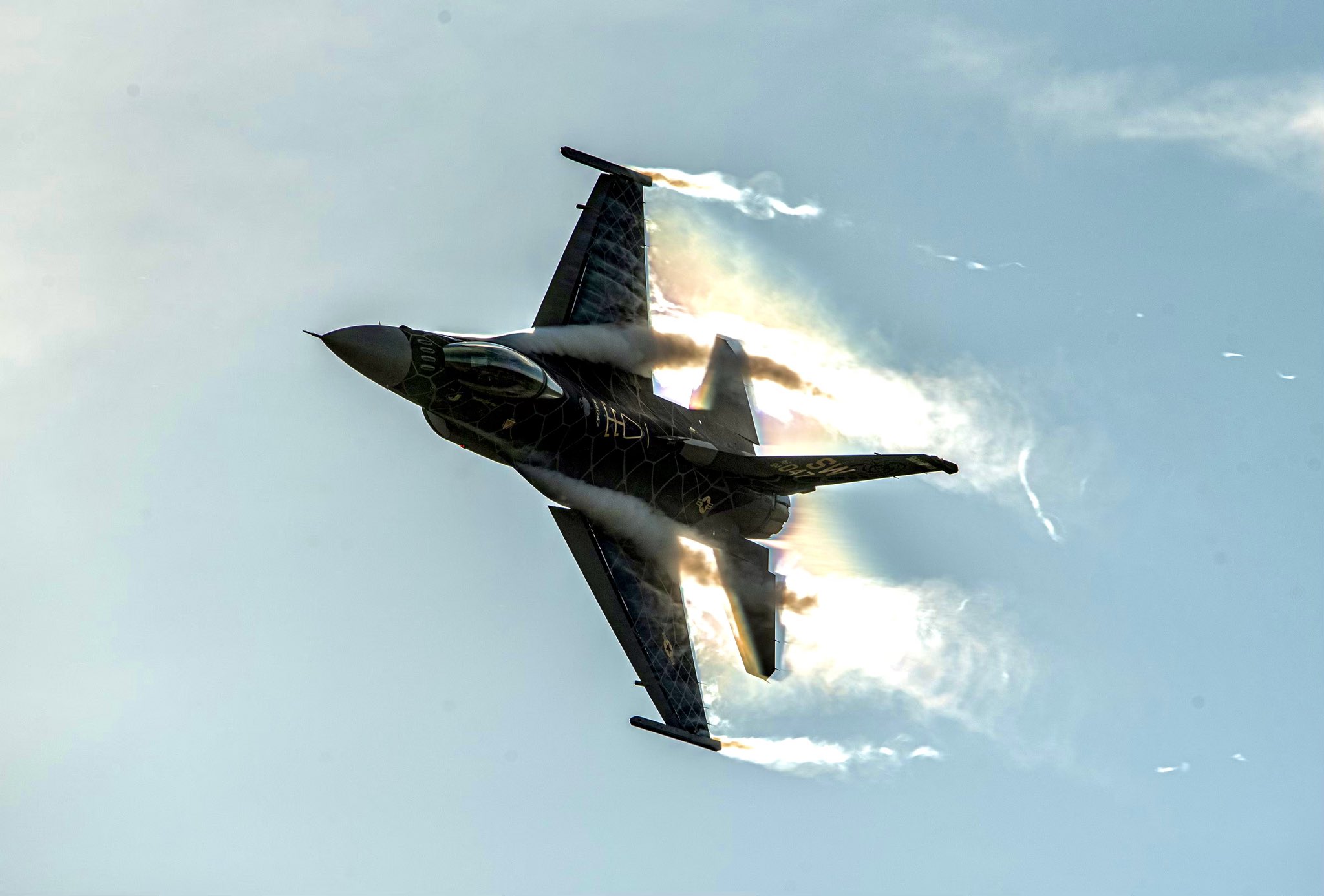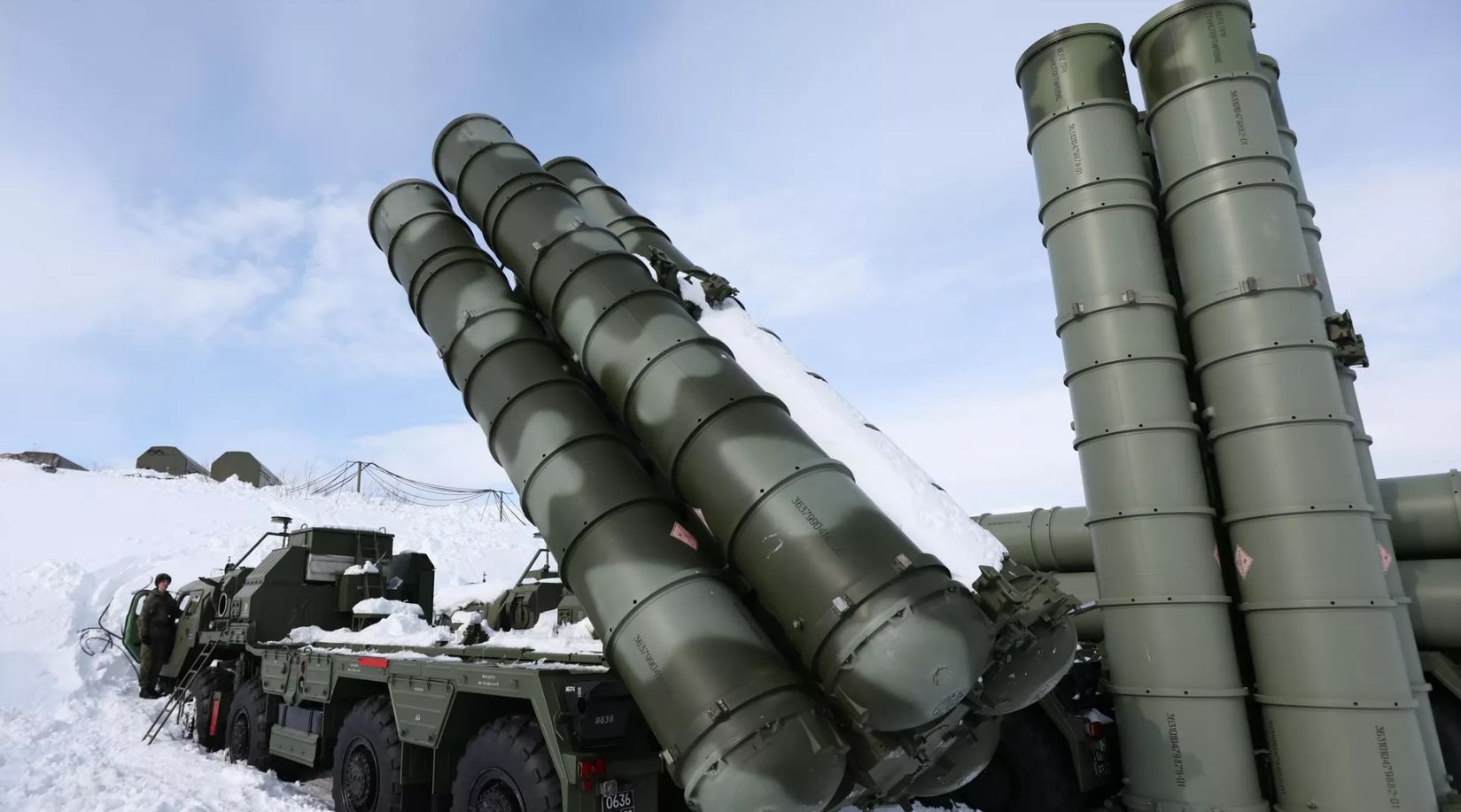After months of waiting, the F-16 Fighting Falcon has finally reached Ukraine and completed its inaugural mission. However, as Russia escalates its actions and goes ‘ballistic,’ there is growing speculation about whether the battle-tested jet will have an impact in combat.
Several media reports on July 31 stated that the first batch of F-16 jets had arrived in Ukraine and had likely conducted “air defense” missions so far. US officials later confirmed the news.
Later, pixelated images of the aircraft surfaced on social media, with military bloggers claiming that an F-16 was seen flying over Lviv, marking the first visual evidence of its kind.
The development comes weeks after the international coalition for arming Ukraine with F-16s and training its pilots had pledged that Ukraine would receive its first Western fighter jets by the end of July. Battered in combat, the Ukrainian Air Force is due to receive 79 F-16s from Belgium, Denmark, Norway, and the Netherlands.
Even though these are older variants of the F-16 that have been decommissioned by their respective air forces in favor of newer and more advanced fighters, Ukraine has long maintained that it would still bolster its air power by augmenting its present fleet composed of outdated Soviet fighter jets.
AfriPrime App link: FREE to download...
https://www.amazon.com/Africircle-AfriPrime/dp/B0D2M3F2JT
For a long time, skeptics said that an F-16’s combat capability against a much superior Russian Air Force would depend on its weapons. This has now been taken care of, as the US recently pledged advanced missiles for Ukraine, including the AIM-120 Advanced Medium-Range Air-to-Air Missile, known as the AMRAAM, the AIM-9X missile, AGM-88 HARM anti-radiation missiles, and JDAM Extended-Range and Small-Diameter Bombs.
While pro-Ukrainian netizens and military bloggers jubilated at the aircraft’s arrival, some skeptics and pro-Russian bloggers warned that the aircraft might meet the same fate as the Abrams Main Battle Tanks (MBTs).
Despite the Abrams tanks arriving in Kyiv to great fanfare and high hopes of altering the dynamics of the battlefield, Moscow’s forces succeeded in destroying several of them.
It is also noteworthy that ever since US President Joe Biden signed off on the transfer of the F-16s, Russia has warned that the aircraft would become sitting ducks in Ukraine and, in recent months, has also started ramping up efforts to incentivize its forces to target these advanced aircraft.
Last month, Fores, a Russian company specializing in oil drilling equipment, confirmed it would pay 15 million rubles (approximately $170,000) to any Russian fighter who successfully downs the first F-16.
Moreover, as the news about the F-16’s arrival in Ukraine broke out, the Kremlin issued a fresh warning saying that the US-built F-16 fighter jets that were supplied to Ukraine would be shot down by Russian forces and their impact on the war’s outcome would be minimal.
When probed about the F-16s, Kremlin spokesman Dmitry Peskov said: “If I’m not mistaken, rewards (for Russian forces to shoot them down) have already been offered.”
F-16s In Ukraine, But What Next?
Several military experts, including in the West, have cautioned that the aircraft is not a silver bullet for Ukrainian forces.
AfriPrime App link: FREE to download...
https://www.amazon.com/Africircle-AfriPrime/dp/B0D2M3F2JT
To put this into context, a veteran fighter test pilot of the Indian Air Force and the former Director-General of the Center for Air Power Studies, Air Marshal Anil Chopra, shared this with EurAsian Times: “Ukraine’s F-16s would not dramatically change the game, given that they are coming in small numbers. Moreover, the Ukrainian pilots are not adequately trained to fly these jets, which means engaging in combat with experienced Russian pilots would be tough. The only role these aircraft would likely play is of air defense because they can very well use ground-based systems like artillery to strike Russia.”Air Marshal Chopra also stated that Russian jets and Ukrainian F-16s would unlikely engage in dogfights for a very long time if that were to happen at all. He had previously argued that Ukraine’s F-16s might have to combat Russia’s MiG-31 Foxhounds armed with RM-37M long-range missiles, which has demonstrated its might by shooting down several Ukrainian jets.
Air Marshal Chopra candidly expressed that Ukrainian pilots are hopeful the F-16 fighter jets equipped with AIM-120 AMRAAM missiles will serve as a defense, a point he reinforced during a discussion with this correspondent. The expert asserted that “the best Ukrainian F-16s can do is play a defensive role and shoot down Russian air-launched missiles”.
In fact, a Ukrainian military expert, Mykhailo Zhyrokhov, echoed the same views. On being asked about Ukraine finally getting the F-16, Zhtrokov said that the models were not the latest and, that “these jets will primarily be used in air defense systems to destroy cruise missiles and drones.” However, he added that the aircraft will serve as a platform for precision weapons.

Several experts and officials in the West have also warned that the F-16 would not be able to enter Russian airspace, limiting its potential offensive role. US Air Force’s top general in Europe, Commander Gen. James B. Hecker, recently stated that the F-16 fighter jets in Ukraine would not be capable of surpassing Russian air defenses or providing immediate air superiority for Ukraine.
“It’s not going to be the … golden bullet, that all of a sudden, they have F-16s, and now they’re going to go out and gain air superiority,” he said during a Mitchell Institute for Aerospace Studies event. “It’s the integrated air and missile defense systems that they’re going up against.” He said that those air defense systems are some of the best in the world and that “we have a hard time with fifth-generation aircraft going against that.”
Russia has extensively deployed its S-400 air defense system, some of them along the frontline. These air defenses have a range of 400 kilometers and can detect targets up to 1,000 kilometers away. In addition, Russia has also deployed the S-500 air defense system, its most advanced yet. Ukraine recognized the threat early on and launched coordinated strikes at the Russian air defense systems, knocking out many of them. Nevertheless, it could have eliminated the threat.

This essentially means that Ukraine would find it very hard to launch air strikes on Russian territory, and any strike would have to be a stand-off strike launched using long-range missiles from the safety of its airspace.
Russia has consistently warned that it would destroy the F-16s in Ukraine even before they take off, making them sitting ducks for Russian missiles. This threat became more prominent in early July as Russia launched missile attacks and destroyed at least five Ukrainian combat aircraft, out of which at least two were Su-27s, and one was the MiG-29. At least three airfields have been attacked in July alone: one in the southern Odesa region and two in central Ukraine, Myrhorod and Kryvyi Rih.
Experts have repeatedly warned that once the location of the air bases where the F-16s are stationed is established by Russia, which could easily be done by deploying a spy or a First Person View (FPV) drone, their troops could use their limited inventory of long-range missiles to hit these bases and annihilate the F-16s while they are still parked on the ground. The Russian forces have several missiles that can reach most Ukrainian air bases.
Squadron Leader Vijainder K. Thakur (retd) argues that Russia will force the Ukrainian Air Force to station these jets as far away from the frontline as possible, which, in turn, would make it increasingly difficult for Ukraine to employ these jets to launch a strike on Russian territory.
Additionally, the expert noted that Ukrainian troops are likely to station their most sophisticated air defense systems, NASAMS (National Advanced Surface-to-Air Missile System) and Patriots (a surface-to-air missile — SAM system), near F-16 operational sites. Russia, on its part, will employ drones, cruise missiles, and precision strike ballistic missiles to attack these air defense units persistently.
The aim would be to ultimately destroy these jets on the ground, as demonstrated in the past in attacks on Su-24s equipped with Storm Shadow missiles.
Almost all experts that the EurAsian Times approached for comments surmised that Ukraine would have to station the F-16s in hardened shelters far away from the frontline.
Thakur recently said, “Because of the threat from Russian ballistic and cruise missiles, NATO F-16s will likely operate from Ukrainian air bases with hardened shelters in central or Western Ukraine. Starokonstantinov airbase in Khmelnytskyi Oblast, which hosts Su-24 upgraded to launch Storm Shadow missiles, could also serve as the F-16 home base. Russian forces have repeatedly attacked the airbase, but it continues to remain in use.”
He further predicted that “F-16s could also be based at Dubno airbase in the Rivne region, West Ukraine. The Dubno Airfield is a military facility. It is likely used for shipments of weapons to Ukraine by air.”
Though the F-16s will add to the capability of the outdated Ukrainian Air Force, they will not help Ukraine establish air superiority for the reasons mentioned, especially as they come in small numbers. Earlier, Ukrainian President Volodymyr Zelensky said in an interview with Agence France-Presse (AFP) that Kyiv would need 120 to 130 F-16 fighters or other advanced warplanes to battle Russia.
As far as the induction of these jets into Ukrainian service goes, it is likely to take place in installments. And as far as the consequences go, the loss of even a single F-16 would be a significant embarrassment for Ukraine and its NATO allies. Currently, Kyiv’s priority is to ensure the survival of these jets and to intercept missiles launched by Russian aircraft.
AfriPrime App link: FREE to download...


